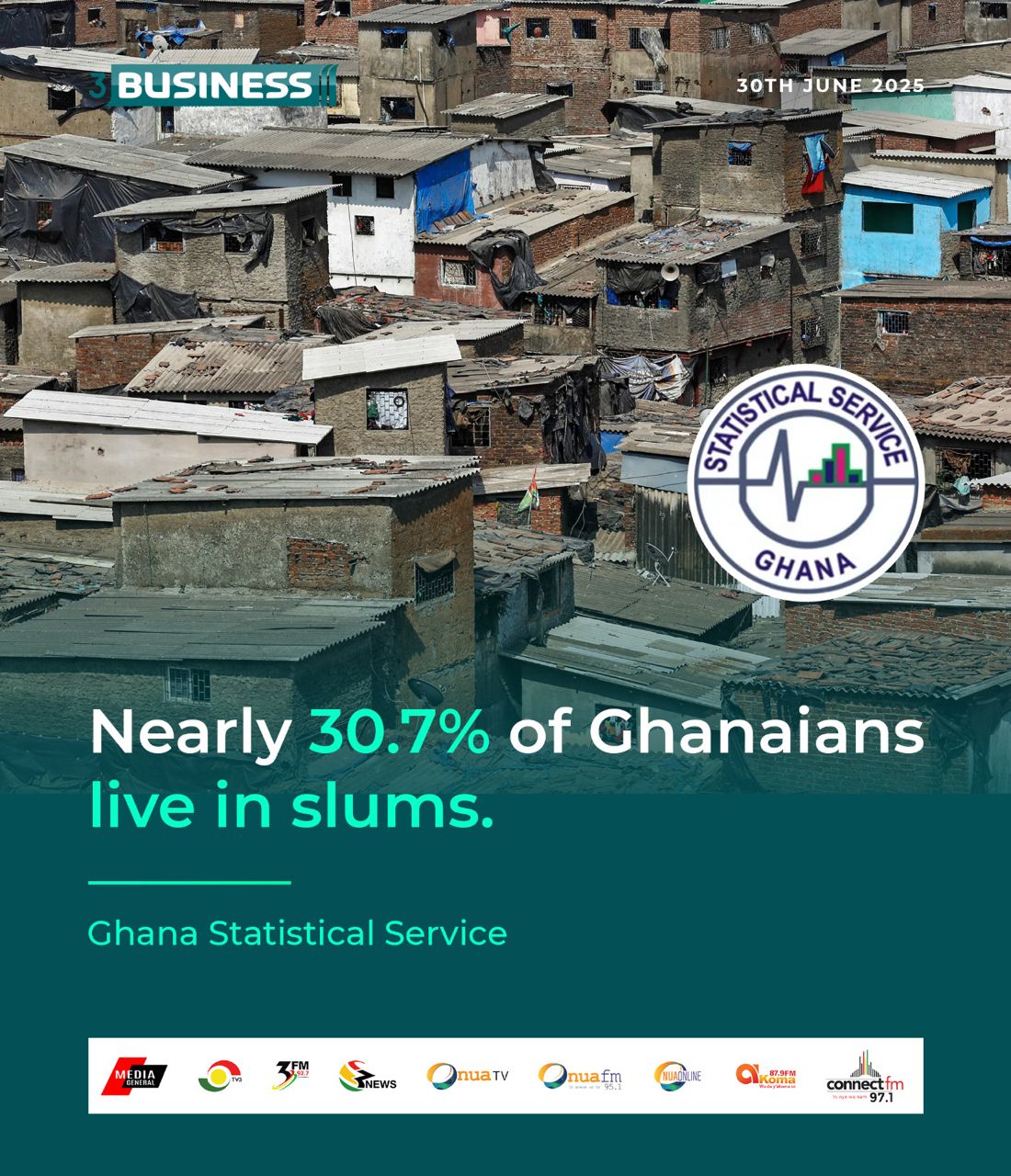Over 4.8 million Ghanaians live in slums – Ghana Statistical Service report reveals

A new report by the Ghana Statistical Service (GSS) has revealed a troubling picture of urban housing in Ghana, showing that nearly one in every three urban residents—approximately 4.82 million people—live in slums or informal settlements.
Titled “The Slums and Informal Settlements Report,” the study outlines how nearly half of all urban households (46.1%) exhibit one or more characteristics of slum conditions. These include lack of access to improved drinking water and sanitation, overcrowding, and non-durable housing.
Launching the report in Accra, Government Statistician Dr. Alhassan Iddrisu described the findings as a wake-up call for policymakers, urging immediate and coordinated action, especially at the local government level.
“This data must not be shelved. It should inform how we plan, allocate resources, and intervene at the local level to reduce disparities,” Dr. Iddrisu emphasized.

Key Findings:
- 4.82 million Ghanaians (30.8% of the urban population) live in slum conditions, a rate higher than the global average (24.7%) but lower than Sub-Saharan Africa’s average (53.9%).
- Multidimensional poverty is more than twice as high in slum areas (23.4%) compared to non-slum areas (10.5%).
- Literacy and education levels are critically low in slums, with 1 in 3 residents unable to read or write, and 1 in 5 having never attended school.
- Household death rates in slum areas (41.6 per 10,000 people) exceed those in non-slum areas (30.7 per 10,000).
- The Greater Accra and Ashanti Regions, despite being more developed, have over half of slum households living in rented accommodations.
- Fertility rates are higher in slums, particularly among women aged 15–49, with a national slum fertility rate of 2.9, rising to 4.1 in the Northern Region.
Read Also: Fuel prices to rise from July 1 – Petrol up 2%, diesel 5% – COMAC
The report also found that only 10% of Ghana’s localities are officially urban, yet 34.1% of neighbourhoods and 26.6% of localities meet slum criteria, highlighting widespread substandard living conditions.
GSS warns that the continued expansion of slums threatens Ghana’s development trajectory and calls for urgent reforms in housing, sanitation, education, and healthcare.
The agency further recommended targeted interventions that directly address inequality and infrastructure deficits in slum-prone regions.
You May Also Like
Sign up to The Daily Briefing
Stay informed with the most relevant stories shaping Ghana and the world, every morning and evening.
By signing up, you agree to our Terms of Use and acknowledge the data practices in our Privacy Policy.
Evans Effah is an expert in online media and digital journalism, with over a decade of experience in content creation, audience growth, and media relations. Email: evans.effah@mg.com.gh







